The work on Project #6 is almost done, and I’d like to show you one of the last steps to completing this project.
So why do I say plaster is to a new pool as sod is to a new landscape?
Because both they steps, plaster and sod, follow weeks (and sometimes months) of rough construction work. And now with these two final “one-to-two-day” steps, the whole project comes together.
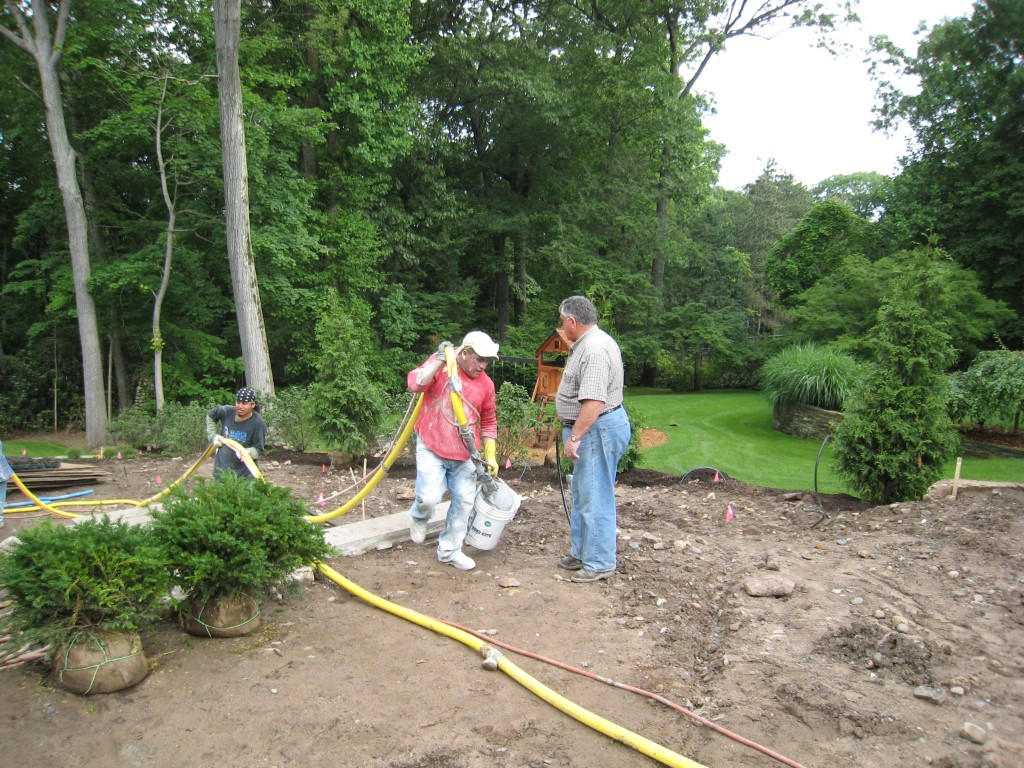
Plastering The Pool
This was a special day – certainly for the homeowner, but for all of us involved with the project.
No matter how many pools you’ve seen installed, the day they do the pool plaster is just…well, special.
The pool construction process can be a lengthy one, especially when custom features are involved such as waterfalls, slide and raised spa.
Throw in some rainy weather, muddy conditions and difficult access and, let’s just say this pool didn’t “happen overnight”.
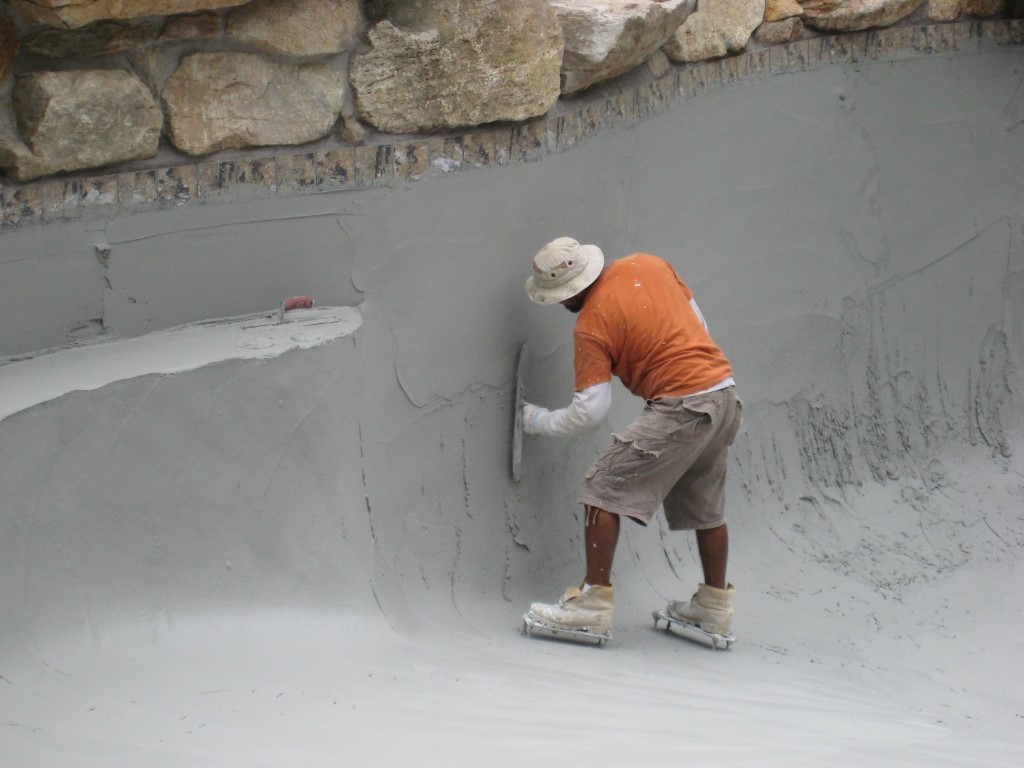
It seemed like the majority of our time on this project was spent working in mud. The day the pool was plastered was no exception.
The pool plaster crew arrived early in the morning with clouds overhead. The decision was made to “go for it”. Rain delays already disrupted this project too many times.
The crew was a good 2 hours into the operation when my phone rang; it was the pool contractor Barry Marson.
He was about 5 miles west of us and was driving into rain. He suggested the plaster crew set up the tarps.
We were lucky to get the warning. Within a half hour the rain started coming down, but the crew continued to work under the tarps.
Don’t Get The Pool Wet!
Sounds funny, right? But that is the case when the plaster work is being done.
The pool plaster is mixed on a truck and then pumped through a hose onto the gunite (concrete) surface. The crew guys are amazing to watch as they trowel the slurry to a smooth surface.
The new plaster is troweled over several times as it is drying. This process is critical and rain would wreak havoc.
Fortunately the rain eventually stopped and the tarp could be removed.
Did you ever wonder how they worked in the pool with wet plaster all around them?
Check out what’s on their feet. They’re wearing metal plates with spikes which let them walk around with little disturbance to the plaster.
In the end they literally trowel their way out to leave a perfect finish.
Barry Marson, the pool contractor, arrived later on to oversee the last steps of the plastering process.
Below you see one of the “mini-pools” to the waterfall feature being troweled off. The surrounding boulders will let folks move around from one feature to the other.
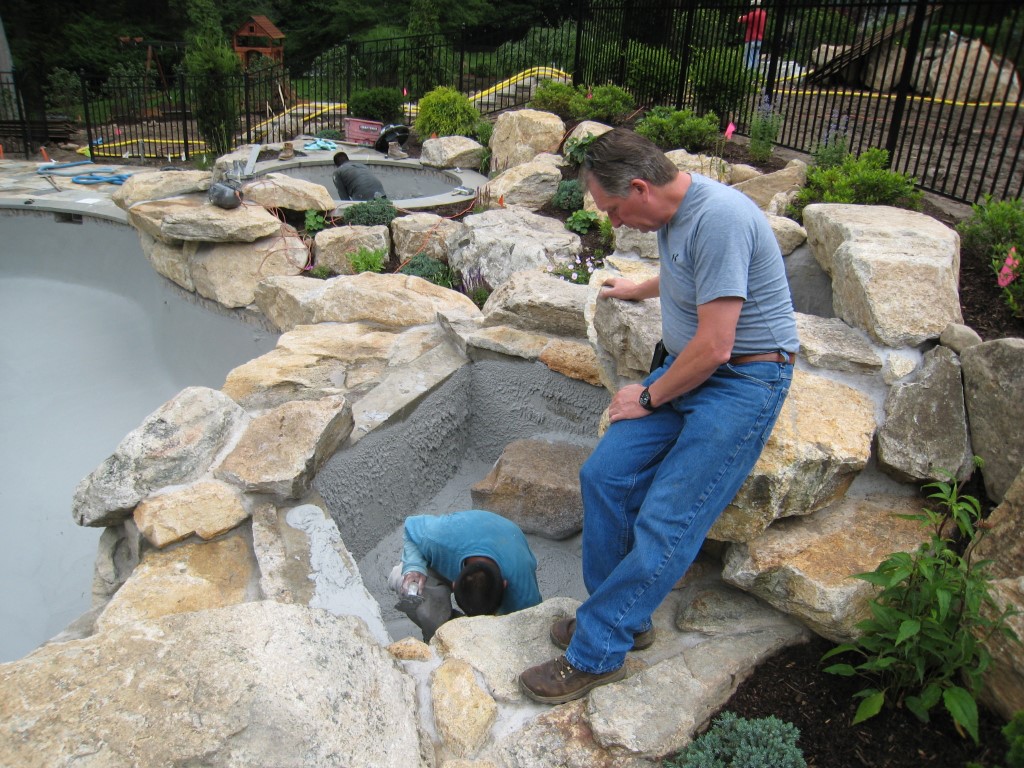
As soon as the crew is finished they begin to fill the pool with water. The pool plaster has “set” and now must be covered with water ASAP so that it can go through a further curing process.
Multiple hoses are fed into the skimmer boxes so that the water enters the pool from the bottom main drain.
Once the water rises to cover a large enough area, water can be shot into the pool directly as long as it hits the water already in the pool. This insures that the uncured plaster is not affected by the force of the hose water.
So you see, the plaster work is a monumental step. In a relatively short period of time (24 – 48 hrs.), the unfinished, bare concrete pool gets this beautiful plaster surface and is filled with water.
It’s the same sort of effect with sod on a new landscape. You work sometimes for weeks grading, building, planting – but on the day you roll out the sod…wow, now you’re getting somewhere! 🙂
Here’s the previous post on this project. And here’s the next.

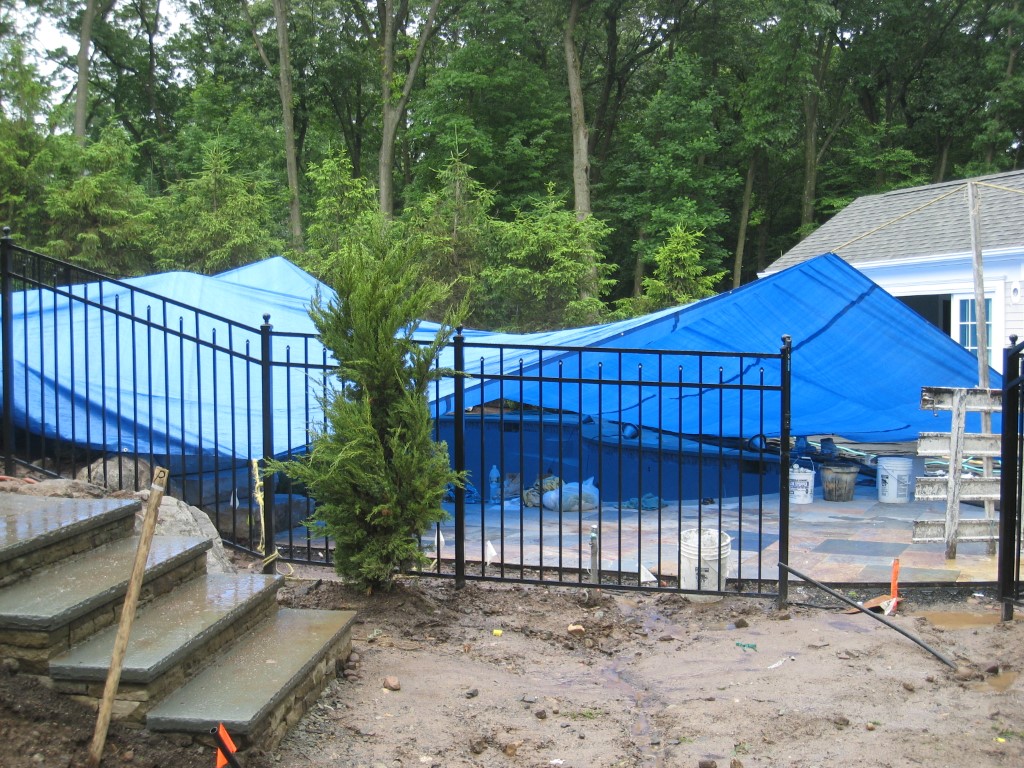
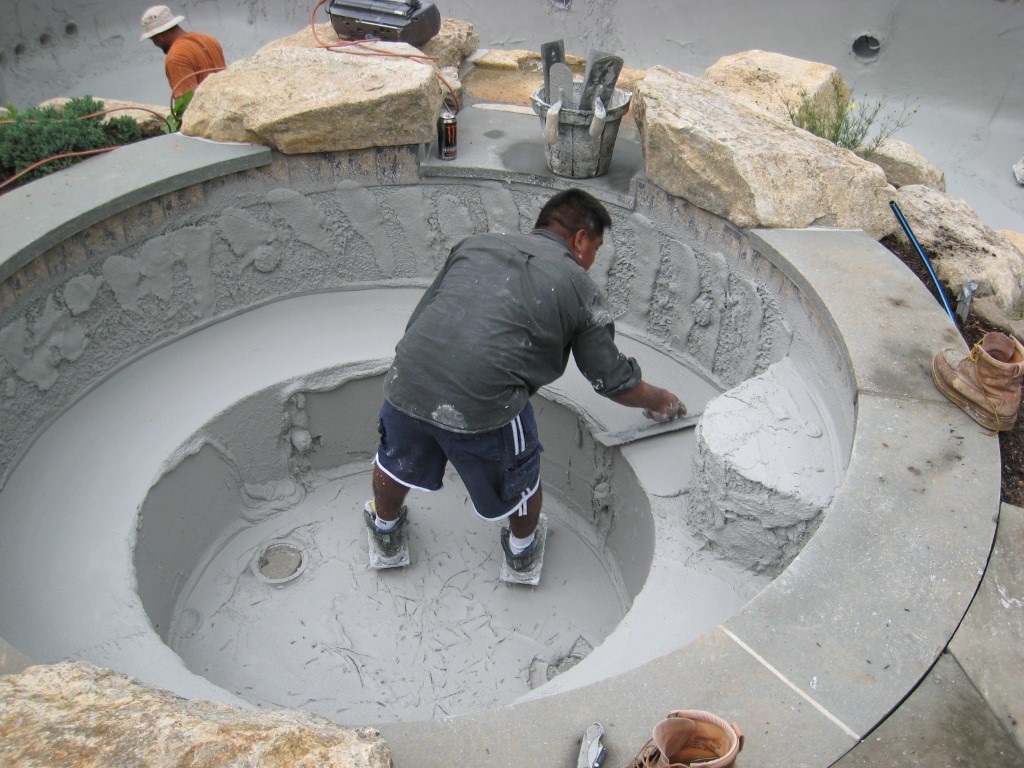
Mike
I’m in the business and I have to ask: did anybody make any money on that job. I know that rain and mud can kill production.
Roger
Hi Mike,
First let me explain my position and relationship with my clients. Essentially I am hired to design the landscape and then oversee and manage it. The homeowner/client has an individual contract with each contractor on the project (e.g. pool contractor, irrigation contractor, etc.). Therefore, I am not directly involved with the estimating and job-costing aspects of the work.
I can tell you that each of the contractors has many years experience and fully appreciated the scope of this project from difficult access to challenging grade changes and other issues. I have no doubt they anticipated these characteristics and accounted for them in their pricing. Your point on the rain and mud affecting production (and in turn, profit) is a good one. I don’t have any means to tell you if the contractors were profitable or not, but I will tell you that everyone of us used every tactic and strategy we could to work around the challenges.
Perhaps the biggest overall affect from the rain and mud was scheduling. At times conditions would be such that we simply could not “work the site”. That would cause a delay in production, and the contractor working at the time would have to move to another job location that was workable. Needless to say this was as frustrating for the contractors as it was for the homeowner.
Roger